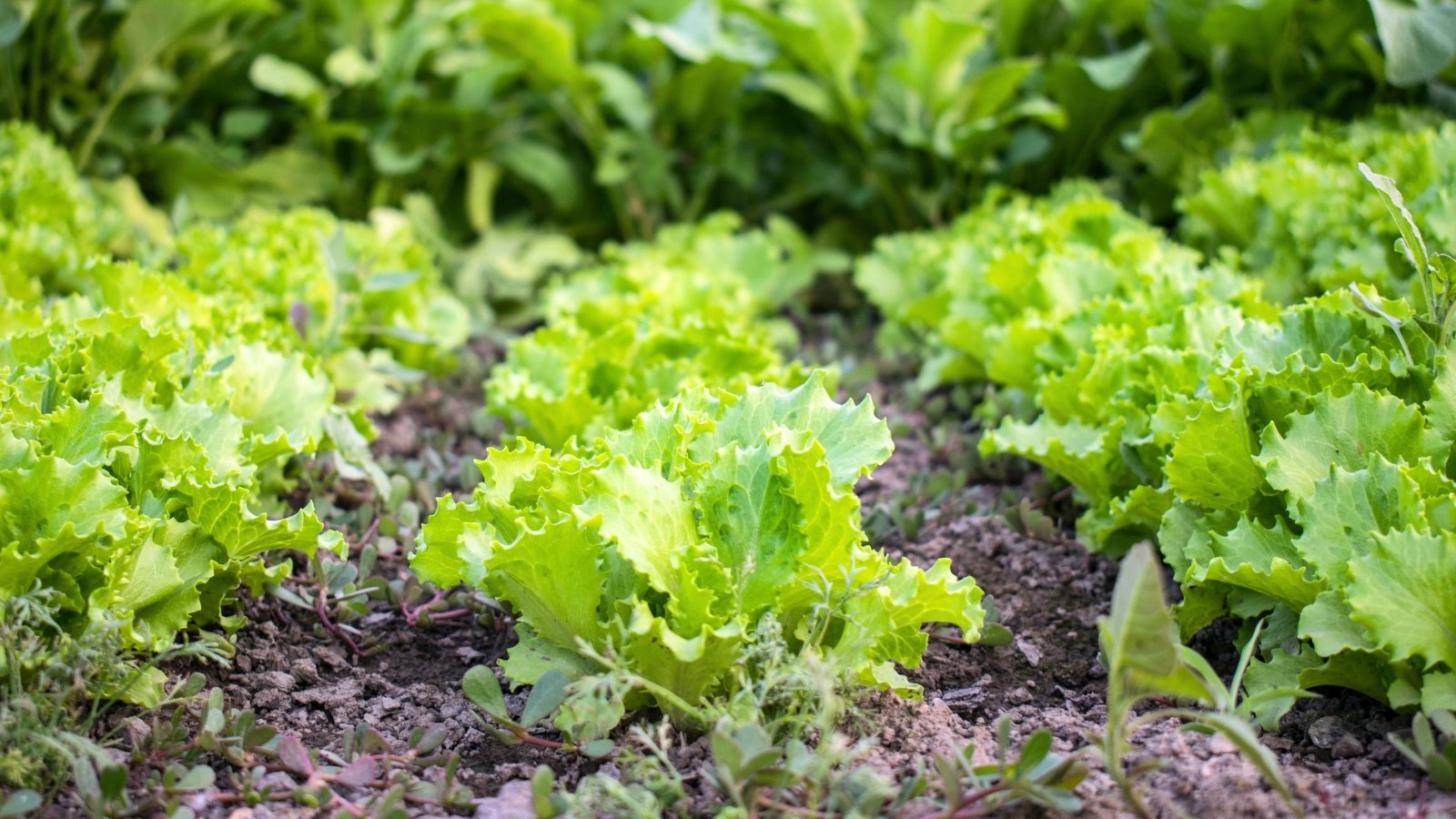Lettuce is a cool-season vegetable, typically planted in early spring, harvested in late spring to early summer, and then removed to make room for warm-season crops.
While some gardeners replant lettuce in the cooler days of fall, most avoid growing it during midsummer, opting instead for heat-loving vegetables. Experienced gardeners often plant lettuce alongside warm-season crops, like tomatoes, so that as the lettuce finishes in early summer, the other plants take over the space.
Lettuce thrives in temperatures between 45 and 75 degrees. In hotter weather, the leaves turn bitter. When leaf lettuce bolts—sending up flower shoots—it signals the end of edible harvests for the season. Leaves picked after bolting will taste unpleasantly bitter.
However, there are ways to keep lettuce producing through summer.
When to Plant Lettuce for Summer
Lettuce can be sown as soon as the soil is workable in early spring. Depending on the variety, seeds germinate at 35°F, but the ideal range is 70–75°F. Seedlings usually sprout within 7–10 days.
Choose the Right Type of Lettuce
Opt for leaf lettuce over head-forming types. You can start harvesting leaf lettuce once outer leaves reach 4–6 inches tall. By cutting only the outer leaves, the inner ones keep growing, providing a continuous supply of tender baby greens. This “cut and come again” method also shocks the plant, delaying bolting. Some recommended varieties for this approach include:
- Romaine
- Summer crisp
- Oakleaf types (flat, lobed leaves)
- Grand Rapids types (broad, crinkled, frilly leaves)
- Green leaf and red leaf
Head lettuces, like Bibb, Butterhead, and Iceberg, take longer to mature and often bolt before forming full heads, making leaf varieties better for extended harvests.
Harvest Leaf Lettuce Frequently
Keeping lettuce leaves trimmed short encourages new growth and delays bolting. Letting leaves grow too large signals the plant to flower and stop producing edible leaves. Harvest regularly, even if it means discarding excess.
Provide Some Shade
Plant lettuce near taller crops like tomatoes, corn, cucumbers, or squash for natural shade. In spring, lettuce gets full sun (6–8 hours) while companion plants are still small, but as summer heat intensifies, the shade helps. Alternatively, use sun cloth suspended over the plants to reduce heat stress.
Keep Lettuce Plants Well-Watered
Frequent watering helps lettuce tolerate heat. Evaporating water cools the soil, and since lettuce has shallow roots, daily watering (or more in extreme heat) is crucial. The leaves are mostly water and wilt quickly in dry conditions.
Transplant
If your lettuce is about to bolt, try digging it up and replanting it immediately. This shocks the plant, redirecting energy to root growth instead of flowering. Keep the roots moist during the process.
Start a Second Crop in Summer
Even with these tips, early-season lettuce will eventually bolt. For a late-summer harvest, plant a second crop in early summer. However, lettuce seeds struggle in hot, dry soil. Try this method for better germination:
- Choose a shady spot, soak the soil, and cover it with a board for 2–3 days, rewatering periodically to cool the ground.
- Sow seeds, water well, and replace the board.
- Check daily, watering as needed until sprouts appear (usually 7–10 days). Remove the board once germination occurs.
- Water frequently while seedlings are small, tapering off as plants mature.
Plant a Fall Crop
Save seeds for a fall planting when cool weather returns. Leaf lettuce grows quickly in autumn, yielding some of the best-tasting greens of the year.

